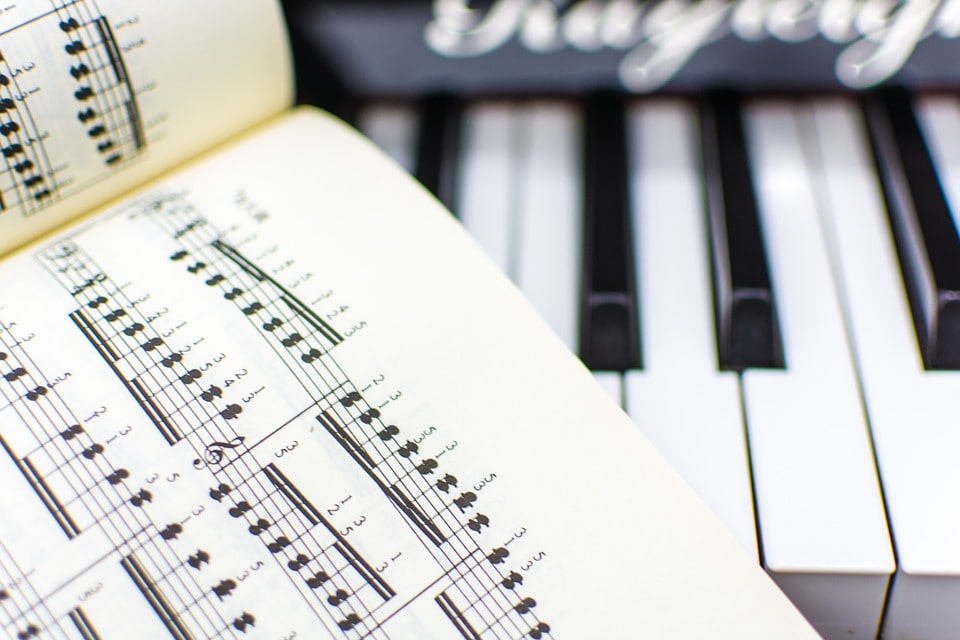Learning to play the piano should be fun, but practicing gets boring if you do not have variety in your repertoire. Because of this, you should look for a way to move past method books or supplement your practice.
Teachers often mix in “real” classical pieces to keep their students interested. Parents might wonder if their kids will play any “real” music, and students will feel good knowing they are playing a popular piece by a famous composer.
As you read through this list, remember that method books work for a reason. They are designed to teach you the art of classical piano by mirroring the best composers and compositions. While these books mirror your favorites, they probably do not include works written by the likes of Mozart, Bartok, Schumann, and the like.
As a piano teacher in West Chester, PA, I work with my students on repertoire that is relevant, skill-appropriate, and fun – I mix methods into my teaching, but I generally rely on works of music outside of methods. For more information, please get in touch!
Starting With Method Books
Starting with method books is the only way to go. No matter how old you are, you cannot plunk yourself down at the piano and learn “Für Elise” because you feel like it. The method book takes you from “I know absolutely nothing” to “I can play piano.”
There is a ton of value in that, and you must be patient as a beginner. Kids have an especially hard time with this because they like the “cool payoff” that they are not getting in the method book.
When a kid can play a basic work by a famous composer, that piece can become the carrot to get the student to learn a certain skill or complete a section of a method book.
Parents, teachers, and students should listen to these pieces, check out the music, and decide which ones are right for their students.
Gymnopedie No. 1, Erik Satie
Satie was an odd individual – really, go look it up. He wrote a piece that’s literally meant to be played 840 times (but many people combine to play for 24 hours).
The Gymnopedie No. 1 is simple, kids have likely heard it on TV and in the movies, and the repetitive nature of the piece makes it easy to learn and memorize. Memorizing this piece might be the first big landmark in a young student’s career.
Canon in D, Johann Pachelbel
This is a timeless classic kids have heard before. One of the best parts of this piece is that it is simple and the bass line doesn’t change. You are giving the student something simple to maintain while learning slightly more complicated melodies at the same time.
Adults who have been in the classical music world for a while are advised to get over their aversion to this piece. It’s beautiful, it isn’t boring, and you can actually teach your students to accentuate different lines, melodies, and countermelodies as they improve.
Prelude No. 7 in A Major, Frédéric Chopin
There’s something powerful about learning Chopin – his music has a lasting impact for a reason. Adult beginners often aspire to playing Chopin’s music as quickly as possible, and when a child performs even an “easy” Chopin piece at a recital, the audience is often impressed.
Prelude No. 7 is a good first Chopin piece to learn for young pianists, although at level 4, it will take some time before a student can play it. Perhaps consider this piece to be a target for year three or four.
Ave Maria, Franz Schubert
Ave Maria is a classic you hear everywhere. Your kids recognize it even if they don’t know it, and it is very simple to play. In many cases, this might be where you start with classical literature. This is also a good piece for kids to learn because they hear it at special events. Even a kid who does not become a music major can repurpose this piece later in life and make a little money playing piano at a wedding or event. Pianists are often called upon to accompany instrumentalists or vocalists with Ave Maria as well.
Note – there are many easy arrangements of this piece that level 1 and 2 pianists can practice and perform.
Morning Mood from Peer Gynt Op. 13, Edvard Grieg
Morning Mood is good for a few reasons. It teaches kids how to:
- Play in 6/8
- Study patterns
- Analyze their music
Set this piece aside for use with kids who are learning a little music theory and need a challenge (you can even teach them to wake up their parents with this music on a lazy Sunday morning). Technically, this piece is “intermediate,” so pianists will need to work up to it.
Clair de Lune, Claude Debussy
Clair de Lune is probably the most relaxing piece of music ever written, regardless of genre or instrument. This is the kind of piece that helps students learn to make musical decisions. This piece is actually quite difficult, but you can find a beginner arrangement like this one for the young pianist in your life, and as the student progresses into early advanced piano literature, they can play the original composition.
Don’t Be Afraid to Diversify
Diversifying any student’s repertoire is good for the mind and soul. Method books serve a purpose that helps kids measure their learning and improve quickly, but signing up for piano lessons in Coatesville should not be a life sentence to a boring method book when there are classics out there that even a beginner can learn.
